
Check out a recently developed and designed website by South Jersey Techies Website Team for National Energy Partners in Mt. Laurel, NJ.
Check out a recently developed and designed website by South Jersey Techies Website Team for NuWave Marine in Deptford, NJ.
Remove Windows 7 Antispyware 2012, Vista Antivirus 2012, and XP Security 2012 (See Uninstall Guide Below)
Win 7 Antispyware 2012, Vista Antivirus 2012, and XP Security 2012 are all names for the same rogue anti-spyware program. This family of rogues is promoted in two ways. The first is through the use of fake online antivirus scanners that state that your computer is infected and then prompt you to download a file that will install the infection. The other method are hacked web sites that attempt to exploit vulnerabilities in programs that you are running on your computer to install the infection without your knowledge or permission. Regardless of how it is installed, once it is running on your computer it will install itself as a variety of different program names and graphical user interfaces depending on the version of Windows that is running. Regardless of the name, though, they are all ultimately the same program with just a different skin on it. This rogue goes by different program names, which I have listed below based upon the version of Windows that it is installed on:
| Windows XP Rogue Name | Windows Vista Rogue Name | Windows 7 Rogue Name |
| XP Antispyware 2012 | Vista Antispyware 2012 | Win 7 Antispyware 2012 |
| XP Antivirus 2012 | Vista Antivirus 2012 | Win 7 Antivirus 2012 |
| XP Security 2012 | Vista Security 2012 | Win 7 Security 2012 |
| XP Home Security 2012 | Vista Home Security 2012 | Win 7 Home Security 2012 |
| XP Internet Security 2012 | Vista Internet Security 2012 | Win 7 Internet Security 2012 |
When installed, this rogue pretends to be a security update for Windows installed via Automatic Updates. It will then install itself as a single executable that has a random consisting of three characters, such as kdn.exe, that uses very aggressive techniques to make it so that you cannot remove it. First, it makes it so that if you launch any executable it instead launches Vista Home Security 2012, XP Internet Security 2012, Win 7 Security 2012, or any of the other names it goes under. If the original program that you wanted to launch is deemed safe by the rogue, it will then launch it as well. This allows the rogue to determine what executables it wants to allow you to run in order to protect itself. It will also modify certain keys so that when you launch FireFox or Internet Explorer from the Window Start Menu it will launch the rogue instead and display a fake firewall warning stating that the program is infected.
Win 7 Antispyware 2012 Screen shot
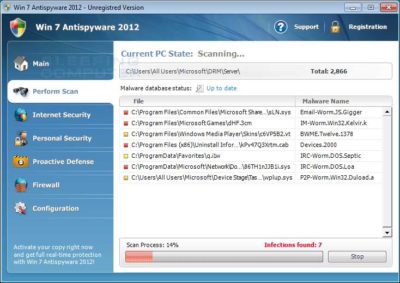
Once started, the rogue itself, like all other rogues, will scan your computer and state that there are numerous infections on it. If you attempt to use the program to remove any of these infections, though, it will state that you need to purchase the program first. In reality, though, the infections that the rogues states are on your computer are all legitimate files that if deleted could cause Windows to not operate correctly. Therefore, please do not manually delete any files based upon the results from this rogue’s scan.
While running, XP Internet Security 2012, Win 7 Antivirus 2012, and Vista Security 2012 will also display fake security alerts on the infected computer. The text of some of these alerts are:
XP Home Security 2012 Firewall Alert
XP Home Security 2012 has blocked a program from accessing the internet
Internet Explorer is infected with Trojan-BNK.Win32.Keylogger.gen
Private data can be stolen by third parties, including credit card details and passwords.
Malware Intrusion
Sensitive areas of your system were found to be under attack. Spy software attack or virus infection possible. Prevent further damage or your private data will get stolen. Run an anti-spyware scan now. Click here to start.
System danger!
Your system security is in danger. Privacy threats detected. Spyware, keyloggers or Trojans may be working the background right now. Perform an in-depth scan and removal now, click here.
System Hijack!
System security threat was detected. Viruses and/or spyware may be damaging your system now. Prevent infection and data loss or stealing by running a free security scan.
Privacy threat!
Spyware intrusion detected. Your system is infected. System integrity is at risk. Private data can be stolen by third parties, including credit card details and passwords. Click here to perform a security repair.
Stealth intrusion!
Infection detected in the background. Your computer is now attacked by spyware and rogue software. Eliminate the infection safely, perform a security scan and deletion now.
XP Antispyware 2012 Alert
Security Hole Detected!
A program is trying to exploit Windows security holes! Passwords and sensitive data may be stolen. Do you want to block this attack?
Just like the scan results, these security warnings and alerts are all fake and should be ignored.
While running, Win 7 Home Security 2012, XP Antivirus 2012, and Vista Antivirus 2012 will also hijack Internet Explorer so that you cannot visit certain sites. It does this so that you cannot receive help or information at sites like BleepingComputer.com on how to remove this infection. When you attempt to visit these sites you will instead be shown a fake alert stating that the site you are visiting is dangerous and that the rogue is blocking it for your protection. The message that you will see is:
Vista Security 2012 Alert
Internet Explorer alert. Visiting this site may pose a security threat to your system!
Possible reasons include:
– Dangerous code found in this site’s pages which installed unwanted software into your system.
– Suspicious and potentially unsafe network activity detected.
– Spyware infections in your system
– Complaints from other users about this site.
– Port and system scans performed by the site being visited.
Things you can do:
– Get a copy of Vista Security 2012 to safeguard your PC while surfing the web (RECOMMENDED)
– Run a spyware, virus and malware scan
– Continue surfing without any security measures (DANGEROUS)
Just like the fake security alerts, the browser hijack is just another attempt to make you think that your computer has a security problem so that you will then purchase the program.
Without a doubt, this rogue is designed to scam you out of your money by hijacking your computer and trying to trick you into thinking you are infected. Therefore, please do not purchase this program , and if you have, please contact your credit card company and dispute the charges stating that the program is a computer infection. Finally, to remove Win 7 Antispyware 2012, Vista Antivirus 2012, and XP Security 2012 please use the guide below, which only contains programs that are free to use.
Tools Needed for this fix:
Automated Removal Instructions for Win 7 Antispyware 2012 & Vista Antivirus 2012 using Malwarebytes’ Anti-Malware:
How to remove Google Redirects or the TDSS, TDL3, or Alureon rootkit using TDSSKiller
If after running TDSSKiller, you are still unable to update Malwarebytes’ Anti-malware or continue to have Google search result redirects, then you should post a virus removal request using the steps in the following topic rather than continuing with this guide:
Preparation Guide For Use Before Using Malware Removal Tools and Requesting Help Topic
If TDSSKiller requires you to reboot, please allow it to do so. After you reboot, reboot back into Safe Mode with Networking again.
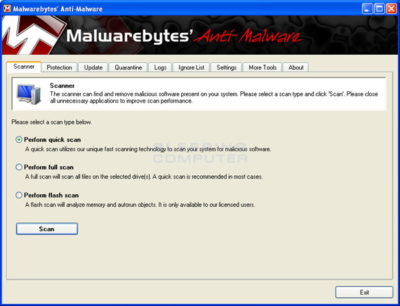
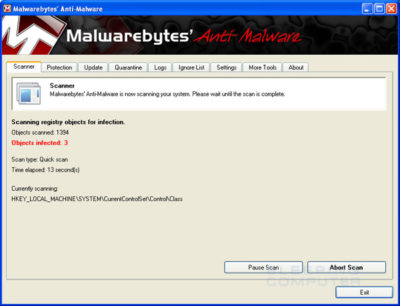

You should click on the OK button to close the message box and continue with the Vista AntiSpyware 2012 & Win 7 Home Security removal process.
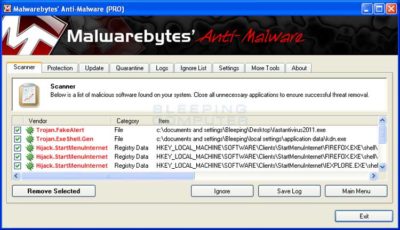
You should now click on the Remove Selected button to remove all the listed malware. MBAM will now delete all of the files and registry keys and add them to the programs quarantine. When removing the files, MBAM may require a reboot in order to remove some of them. If it displays a message stating that it needs to reboot, please allow it to do so. Once your computer has rebooted, and you are logged in, please continue with the rest of the steps.
Your computer should now be free of the Vista AntiSpyware 2012 & Win 7 Home Security program. If your current anti-virus solution let this infection through, you may want to consider purchasing the PRO version of Malwarebytes’ Anti-Malware to protect against these types of threats in the future.
If you are still having problems with your computer after completing these instructions, then please follow the steps outlined in the topic linked below:
Preparation Guide For Use Before Using Malware Removal Tools and Requesting Help
To see the original article in its entirety click here.
Though we live in an age of nearly-ubiquitous broadband, it still seems like certain pages don’t load as quickly as one would like. After you’ve tried changing your ISP (Internet service provider), or ordering a T1 internet connection, consider that many problems can be solved with a series of tips and tricks, outlined below.
These are only a few of the most common causes of Internet slowness. Hopefully one of the solutions will work for you!

Gain new customers and keep current ones coming back! Express Email Marketing Services lets you easily create beautiful, full-color emails with no technical or design skills. Plus, build and maintain your social media presence by managing all your profiles in just one place.
Email Marketing Services is one of the most effective and inexpensive tools in your marketing arsenal, with an average cost of less than a penny per email. It’s also an obvious (if often overlooked) strategy for generating more revenue from the customers you already have. Best of all, you can place an unsubscribe link at the bottom of every email, so they’re completely permission-based.
Call (888) 505-1532 to get started now or click here

With WebSite Tonight, everything works just like you’d expect. Need to move a section? Just drag and drop it. Want to add some text? Just click and type. Need help getting started? Choose from over 2,000 design and color combinations in our template library, including 120 pre-built websites customized to fit your business or style – just replace the text and images and you’re ready to go!
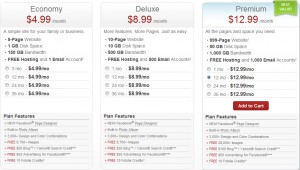
With hundreds of colorful, ready-made site designs and thousands of high-quality images, WebSite Tonight takes the complexity out of developing a website so you can let your creativity flow.
Choose a design
Make it yours
Publish it
WebSite Tonight is not only fast and easy to use, it’s packed with powerful features. Expand and enhance your site with a huge variety of tools and options that will keep your site fresh and interesting and your visitors coming back for more.
Build your website
Customize your website
Add elements to your website
Publish your website
Protect your website
Market your website
Our highly trained, courteous support staff is waiting to take your call. Whatever time it takes to assist you, that’s the time you’ll receive. We’ll resolve any issue to your complete satisfaction.
“It embodies hardware and software working together. People want to work and play,” Steve Ballmer said today amid much fanfare at Milk Studios in downtown Los Angeles. Microsoft has officially entered the ring with the Apple IPad. Microsoft views the Windows 8 Surface Tablet as a “stage for Windows 8.” It’s 9.3mm thin, has full size USB 2.0 ports, a massive kickstand and weighs only 1.5 lbs. The casing is made out of magnesium (specifically, a material Microsoft calls VaporMg) and screen is covered in the Gorilla Glass 2 and optically bonded, a feature for the Microsoft Windows 8 Surface Tablet brags was specifically made for the Surface Tablet. The Microsoft Windows 8 Surface Tablet is directly aimed at consumers, and with that, the iPad.
Windows 8 is at the core of Microsoft’s Surface Tablet. As such, it’s Metro device but also has access to all the Windows, not to mention Xbox features. Microsoft Surface Tablet is clearly the product Microsoft had in mind when it announced the Xbox SmartGlass feature at E3 earlier in the month.
Microsoft also announced several accessories for the Microsoft Surface Tablet including a clever 3mm thick cover that features a full (albeit super-slim) keyboard. Since it’s held on by magnets, it will likely be called a copy of the iPad’s SmartCover, too. The backside of the Surface even features a massive, unit-wide kickstand.
There will be two hardware options for Microsoft’s Surface Tablet, with both an ARM option and, for the full Windows experience, an Intel chip.
But like most hardware, it’s nothing without the right software. Ballmer was very clear at the beginning of the announcement event that the Microsoft Surface Tablet’s strength is the Windows ecosystem. This tablet runs Windows 8, and with that, both Metro and the traditional desktop environment. Every application that runs on Windows, save perhaps Skyrim and the like, should run on a x86 Surface.
Still, if Microsoft is attempting to take on Apple, it will need to court a new crop of developers. The iPad’s strength comes from its legions of small 3rd party devs that for the most part completely ignore all things Microsoft. Up until this product, there wasn’t another tablet platform with the same sort of penetration numbers as the iPad. But with the Surface Tablet, Microsoft is essentially giving developers a massive user base as the applications will hit both mobile and desktop units — and Metro’s dedication to the touchscreen makes the deal even sweeter.
The new Windows RT-powered Surface Tablet will sport either 32 or 64GB of storage depending on the purchaser’s preference, while the more traditional Intel variant will come with either 64 or 128GB. Microsoft declined to dive into specifics about their new tablet’s release, though they were quick to note that the Surface tablets would be priced “competitively” when they make it to market.
To View Full Article Click Here
The invitations to the ball have arrived!
October 25th is going to be busy one for Microsoft watchers, fans, and foes.
Drip, drip, drip
The Redmondians are continuing to torture us Microsoft watchers with a slow flow of information about the company’s bet-its-business launch.
We already knew Microsoft planned to launch Windows 8 and its ARM-based Surface RT devices in New York City on October 25, thanks to a save-the-date invitation we got a while back. We knew those products would become available commercially the following day, and we found out this week that Microsoft would be opening 30-plus holiday pop-up stores in the U.S. and Canada on October 26 as well.
As of October 4, we now know that the launch is going to be a lengthy affair — from 10 a.m. to 3 p.m. ET.
Here’s what I just got in my in-box:
Will there also be, as some are reporting, some kind of “midnight madness” event here in New York to coincide with Windows 8 and Windows RT PCs, tablets — and Microsoft’s own Surface RTs — going on sale as of October 26? No word on that yet. (I asked.) But I’d be surprised if there wasn’t. Microsoft officials have said its Surface tablet devices will be sold only through its own brick-and-mortar stores, as well as “select” Microsoft online stores. Those without a Microsoft Store nearby will only be able to purchase online, unless Microsoft modifies its previously stated plan.
Microsoft still has not released pricing or a full and complete spec list for its Surface RT tablets/PCs. It has not yet made them available for preorder. The Intel-based Surface Pro versions are not due out until three months, give or take, after the Windows RT launch.
If you’ll be in/around New York City on October 25 and 26, stay tuned for information about a meetup/tweetup that a few of us Microsoft bloggers, including my Windows Weekly cohost and Windows SuperSite editor, Paul Thurrott, are planning. More details on that to come soon via Twitter. Hope you can join us.
To View Full Article Click Here
Summary: A Microsoft executive let slip in the Czech Republic that the long-rumored Microsoft Office for Android smartphones and tablets and Apple iPad and iPhones will be arriving in early 2013. Microsoft now denies that their executive was speaking accurately.
We’ve known for months that Microsoft was bringing a version of Microsoft Office 2013 to Android tablets and Apple’s iPad family. Now, according to the Czech tech news site, IHNED, Microsoft product manager Petr Bobek has said that Microsoft is planning to release native iOS and Android versions of Microsoft Office 2013 in the first quarter of 2013
Bobek, a Microsoft Office portfolio manager in the Czech Republic, said that these new versions of Office will be available to larger companies and Microsoft partners In December 2012. small-office/home-office (SOHO) and household users will have to wait until at least February. The online version of Office 365 edition for mobile devices and tablets will appear in early 2013.
In an e-mail, the author of the INHED story clarified that the release would be after March 2013. “We had a slight miscommunication with the MS guys and the timeline for Office for iOS and Android is not a March release, but release sometime after March.”
Officially, the only thing Microsoft had to say at first was that “As we shared previously, Office Mobile will work across Windows Phones, Android phones and iOS, and we have nothing additional to announce today about retail availability of the new Office.”
Later the same day, Microsoft’s head of corporate communications, Frank X. Shaw, denied the whole story. Shaw tweeted, “The information shared by our Czech Republic subsidiary is not accurate. We have nothing further to share.”
No matter when Microsoft delivers the Android and iOS goods, Microsoft’s support of any version of Office on a non-Windows smartphone or tablet strikes me as an odd move. In a shareholder letter, Microsoft CEO Steve Ballmer said that Microsoft is shifting its model to focus on devices and services. This is a radical and dangerous shift for a company that’s always made it money from software licensing. And, now, instead of using Office as a crowbar to pry users from iPads and Android tablets to its Surface tablets, Microsoft is going to offer Microsoft Office 2013 on its device rivals? Odd. Very odd.
Historically, Microsoft has locked its customers into its software ecosystem. Since Microsoft is a non-starter in the mobile space, I find it surprising that they’re not trying to exploit its Office suite in a similar manner in this new market.
That said, given the early reports of Office 2013, which didn’t even have touch enabled for its tablet versions by default, I don’t see Google, with Google Docs and QuickOffice, being worried about Microsoft being a rival on either devices or services anytime soon.
